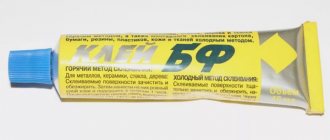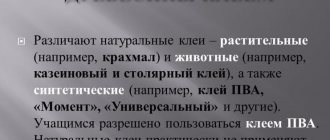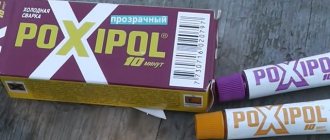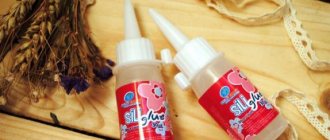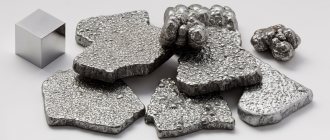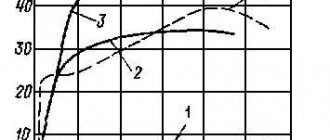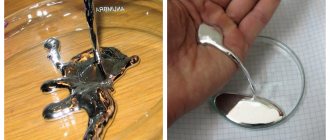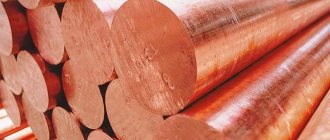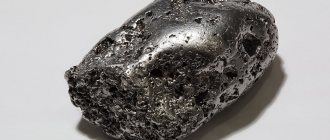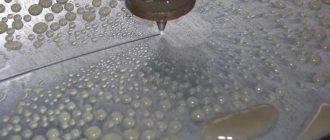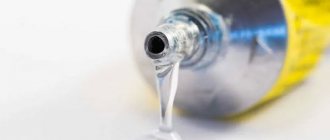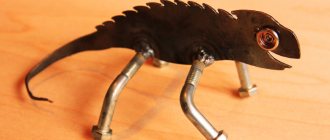Adhesive compositions are fairly easy-to-use means of joining workpieces and parts of various types. Heat-resistant adhesive for metal is no exception in this sense, since it allows you to do without the welding procedure.
Unlike previous times, when adhesives were prepared mainly from natural ingredients, modern manufacturers prefer to use synthetic polymers.
Heat-resistant adhesives belong to the category of special chemical compounds that are characterized by a high degree of resistance to elevated temperatures.
Glue characteristics
Today, adhesives differ in purpose and composition . The main types include: thermoplastic, thermosetting, drying and heat-resistant. The latter type is designed for use in conditions of temperature fluctuations. At high and low temperatures the base does not lose its properties. From the above, we can conclude that heat-resistant adhesives have characteristics that allow them to maintain their properties during temperature changes.
Scope of application
The spectrum of action of thermal adhesive is so wide that it can be considered a universal base. It is used when working with plastics, graphite, metal, etc. This adhesive provides a good effect when applied to glass or ceramics. We can say that this type of glue is used in many industries.
Properties of heat-resistant base
Often, both in production and in everyday life, there is a need to mount or connect certain components that operate at elevated temperatures . Of course, it will not be possible to completely do without welding, but it is possible to connect such components to perform work at high temperatures. The temperature range for heat-resistant adhesive is quite wide, which determines the universal properties of such bases.
Types of adhesives
Thermal adhesives have found widespread use in a variety of substrates designed for environments with thermal shocks. Such foundations minimize the harmful effects of external conditions.
Today, the industry produces various types of heat-resistant adhesives . There are natural and synthetic types on sale. The latter contain additional ingredients (plasticizers) to give them heat, moisture and frost resistance. Both the first and second types are used for installation work with fireplaces, tiles, glass and metal elements. The differences between synthetic and natural adhesives lie in the cost and quality of the composition. The glue is available in the form of a solution or mixture.
Review of manufacturers
Formulations from well-known manufacturers are popular:
- Skanmix. The Finnish product is environmentally friendly, has good adhesion, does not shrink or crack.
- Ivsil Termix. The composition with aluminate cement is intended for laying stove walls, heat chambers, and facing with natural and synthetic stones.
- Ceresit Flex CM-16 and CM-17. Common mixtures are waterproof, frost-resistant with good adhesion. They do not deform when covering a heated floor.
- Mixonite Termo. It is a universal product with high elasticity and frost resistance.
- Polimin P-1. Does not withstand strong vibrations, but resists temperature changes.
- Pala TERMO 601 . Heat-resistant adhesive is used when laying tiles, ceramics, and stone.
- Neomid. Universal mastic can be combined with many materials and can withstand up to +1300°C.
- Makroflex. Heat-resistant sealant is not recommended for use on metals and acrylic surfaces.
Russian manufacturers produce high-quality mixtures at an affordable cost: Terracotta Mastic, Profix, Hercules, Pechnik, heat-resistant Moment .
Surface treatment
If we talk about the gluing mechanism itself, it is mainly determined by the composition. Certain compositions are supposed to be applied to the entire surface, others - only by a spot method
Working with metal
When fastening metal elements, several methods are used: gluing, welding or mechanical connection. Gluing requires adherence to a special technique, which consists of a point impact on the target surface. For such work, it is recommended to use heat-resistant glue for metal 300 degrees.
As a rule, to work with metal elements, a special epoxy thermal composition with synthetic plasticizers and additives is used.
High-quality high-temperature metal adhesive can withstand temperatures of about 370 degrees. This determines its widespread use in the installation of heated floors. Hot-melt adhesive is often used in finishing works of saunas, fireplaces, stoves, etc.
Glass bonding
Today people value not only practicality, but also place increased demands on the aesthetic component. This is why, for example, household appliances are often made using various glass elements. Over time, such components may require adjustments. This group includes devices with a high degree of heating .
When operating under elevated temperature conditions, various violations of the integrity of components may occur. Heat-resistant adhesive for glass with organic compounds allows you to easily, quickly and reliably solve such problems without compromising the transparency of the surface.
Oven adhesive
Until recently, clay was the main material for facing hot surfaces. But clay is a rather dirty and labor-intensive material to work with. There are 2 types of adhesives suitable for ovens. These are heat-resistant sealants and adhesives. Both options will allow you to reliably adhere: bricks to each other (hot-melt adhesives) and bricks with different materials (sealants).
Heat-resistant glass products
Used for repairing home appliances with glass elements and heating appliances.
Resistance to high temperatures is provided by the organic compounds present in the composition. Adhesive products for glass surfaces have a transparent structure.
Furnace glue
Special heat-resistant compounds were able to become a high-quality replacement for the clay traditionally used in furnace work. They provide deeper adhesion of materials and do not require dirty preparatory work.
In combination with silicone sealants, they strengthen the masonry and increase its gas tightness and provide protection against deformation under the influence of elevated temperatures.
Advantages and disadvantages of hot melt adhesive
In addition to basic properties, thermal compositions have the following qualitative characteristics
The advantages of this glue include the following:
- Hot-melt adhesive is characterized by high fracture strength. Manufacturers, as a rule, determine the degree of bonding strength of surfaces at 1.2 MPa.
- Fast setting and drying. Depending on the temperature and air humidity, the average drying time is about half an hour. The glue can be formed and variously manipulated within 10 minutes.
- Hot-melt adhesive provides reliable and durable adhesion of materials for many years without losing its qualities.
- Heat-resistant adhesive does not change its intended properties under the influence of low and high temperatures. It is used for cladding and masonry in the temperature range from 10 degrees below zero to +35. The positive temperature maximum occurs at +750 degrees.
Among the existing shortcomings (which are mostly insignificant) the following can be noted:
- Quite quick connection of heat-resistant adhesive to the material. This requires fast and precise work to connect components.
- Lack of flexibility and shrinkage.
Kinds
The properties of a heat-resistant mixture are determined by their composition. Main types of heat-resistant glue:
- For installation of a heated floor system. Such products can withstand temperatures up to 50 degrees. This type of glue is not suitable for lining stoves and fireplaces.
- For finishing fireplace and stove structures. This type of composition can easily withstand temperatures up to 1200°C.
In addition, heat-resistant mixtures can have different release forms:
- Liquid composition. This hot melt adhesive has a jelly-like structure. Most often, these materials are ready for use immediately after opening the package.
- Powder. Before use, you need to prepare an adhesive solution from the powder. To do this, you should use the instructions that should be on the packaging.
The difference between heat-, fire- and heat-resistant glue
Most often, experts prefer universal types of glue. This allows you to speed up the progress of work and satisfy all the customer’s needs. If we consider each type of glue separately, we can highlight the following features:
- Heat-resistant - able to easily withstand prolonged exposure to temperatures up to 140°C.
- Heat-resistant adhesive - can withstand temperatures up to 1000°C.
- Fireproof mixtures - withstand exposure to open flame for at least 3 hours. Such compositions are highly resistant to chemicals.
Glue for laying the base of the fireplace
Fireplace adhesives may contain cement, clay and sand. They are less elastic than other types, so it is not advisable to use them for cladding purposes.
Under the influence of high temperatures, the shape of substances changes - they expand. When cooled, they narrow again.
If the materials have the same composition, then their contraction/expansion ratio will be similar, which minimizes the risk of cracks.
Fireproof adhesive for fireplace cladding
If the fireplace needs to be finished with stone or tile products, you can use a special glue, which contains predominantly minerals that provide increased adhesion and elasticity.
The use of such mixtures allows us to minimize the risk of tiles (ceramic tiles) falling off during subsequent operation of the stove.
To adjust the surface of fireplace and stove structures, soapstone powder based on liquid glass is often used. Such compositions are called Finnish and have increased heat transfer, so the fireplaces for which it will be used for lining will quickly heat the room.
In addition, Finnish hot-melt adhesive mixtures are extremely plastic when exposed to high temperatures.
Famous hot melt adhesive brands
Today on the shelves of construction stores you can see a wide variety of types and brands of hot-melt adhesive. All manufacturers claim that their products are the best. In order not to get lost in all this, you should figure out which brands of hot melt adhesive are the most popular today .
- D-314. Heat-resistant composition from a Russian manufacturer. Designed for working with ceramics on fireplaces and stoves. The mixture has dimensional stability and elasticity and can withstand temperatures up to +850 degrees.
- "Super fireplace." Heat-resistant composition produced in Russia. Contains reinforcing fibers and is capable of gluing brick and concrete bases exposed to high temperatures.
- "Hercules". An adhesive composition intended for construction work with stoves and fireplaces. Withstands temperatures up to +1200 degrees. It has proven itself well when finishing low-porosity ceramic tiles.
- "The Epoxiline Moment." Heat-resistant adhesive based on epoxy resin. Used for processing glass, metal, ceramic elements. Forms a very durable layer, which can later even be polished or drilled.
The best synthetic sealants
- Polyurethane sealant Sazilast 25 is used for sealing gaps, cracks, joints during the construction and repair of buildings. Withstands temperatures from -60 °C to +70 °C.
- Universal radiator sealant Done Deal DD6855. Used for sealing car radiators. Resistant to vibrations and all types of antifreeze.
- Polyurethane sealant Sazilast 25. Used for external sealing of buildings. Operating temperature range from -60 °C to +90 °C. Durable and resistant to all atmospheric conditions, predicted service life up to 25 years.
Having become a little more oriented in all the variety of adhesives and sealants, we again move on to the question “which is better?” There is no universal answer to this question, just as there is no magic glue for all occasions. In some cases, the best glue may be an ordinary adhesive stick - the price, brand promotion and obsessive advertising of a particular composition do not matter here. As already mentioned, our review includes products from different companies and price categories, and the list is compiled not by the cost of the compositions and the promotion of brands, but by the number of stars in the rating and consumer reviews. Therefore, it is important to select formulations specifically for a specific situation. We hope that this review will help you choose “your” most suitable composition. And we, in turn, promise to regularly publish tips that may be useful and look forward to seeing you again.
Safety requirements
When working with heat-resistant adhesives, certain safety precautions . For example, the dry type can have a negative effect on the human respiratory system. Therefore, if necessary, use respirators.
Thus, all the facts indicate that heat-resistant adhesives do not have serious contraindications when working with them. But before starting work, it is necessary to first clearly define an action plan.
Hot-melt adhesives not only have resistance to temperature changes, but are also characterized by water-repellent properties. During operation, no harmful fumes occur. Therefore, for example, high-temperature ceramic adhesive can be used in bathrooms. It should be remembered that only a thoughtful approach to the selection of building materials will help make the right decision that meets all quality and safety requirements.
Popular brands
One of the most famous heat-resistant adhesives is Terracotta. It is used for finishing stoves, fireplaces, heated floors; it works great on materials such as brick, tile, and natural stone. “Terracotta” can withstand up to +400 degrees, therefore it is only suitable for exterior decoration. Other quality heat-resistant adhesives are:
- "Stove maker." Dry powder adhesive, perfect for natural and artificial stone and tiles. The maximum temperature of heat resistance is +250 degrees. The drying time of the glue is long - 7 days, but it is very flexible and durable.
- "D-3142". Produced in Russia, intended for finishing metal stoves and other heating equipment. Thermal resistance is +850 degrees. The composition is elastic, after dilution it does not deteriorate within 3 days.
- "The Epoxiline Moment." Withstands up to +750 degrees, suitable for repairing ordinary and fragile materials. It is used in everyday life and industry.
- "Hercules". High-quality adhesive for stoves and fireplaces, barbecues, barbecue areas, withstands heating up to +1200 degrees.
Independent use
Features of applying the mixture:
- First you need to clean the work surface from dirt, grease, and dust.
- For smooth surfaces, sandpaper must be used.
- If the work surface is cold, it is recommended to warm it up a little. If this is not done, the adhesive composition can quickly cool.
- The actions taken must be quick and clear.
- It must be applied in strips or in a sinusoidal pattern.
Step-by-step guide to applying adhesive to your work surface:
- Insert the glue stick into the cartridge.
- Turn on the device.
- Let the glue warm up.
- Press the trigger of the gun and squeeze out the required amount of mixture onto the surface to be treated.
- When using heat-resistant glue, you need to make sure that the molten mixture does not get on your skin.
Fireproof tile adhesive can be applied by hand using a small roller or a glue gun.
Peculiarities
The first and main advantage is that it is a good alternative to welding. At the same time, it provides almost identical grip in terms of strength. If you use a chemical product instead of the usual method, you can save money. No additional equipment is required. But if we compare it in terms of strength, then before welding this indicator is slightly inferior. A specific liquid substance is different from the rest. The surface hardening process occurs only when heated.
The composition is in demand in household and construction chemicals. It is also often used in car repair and plumbing. If you choose the right product, you can combine any products.
